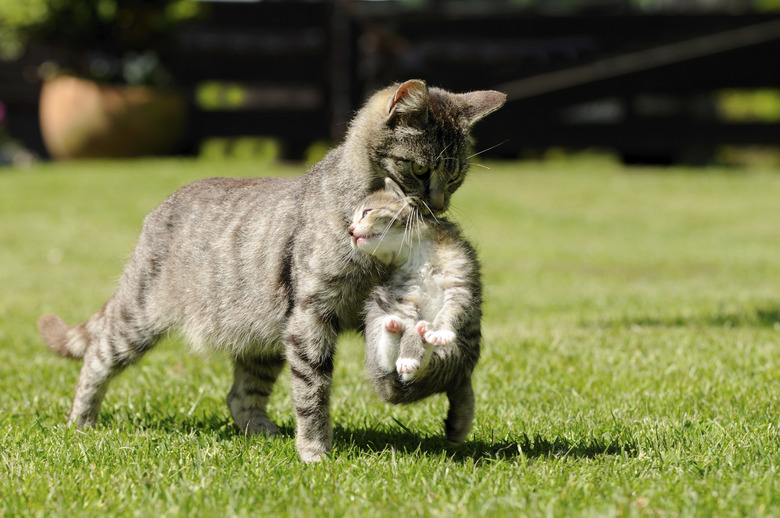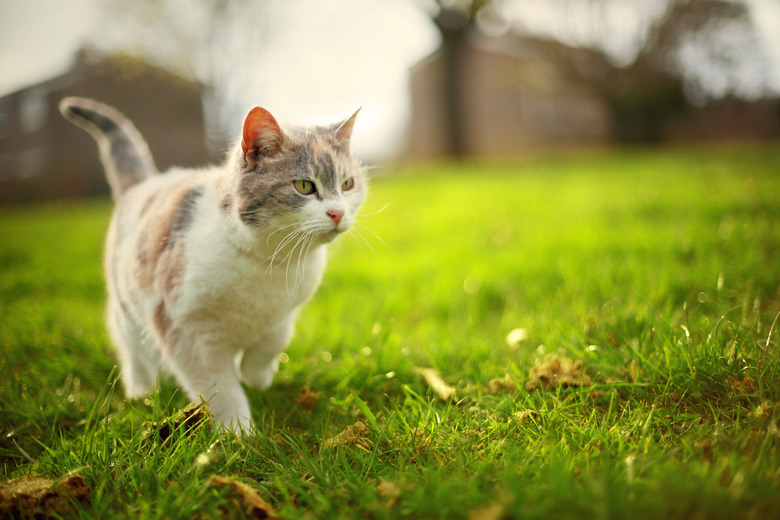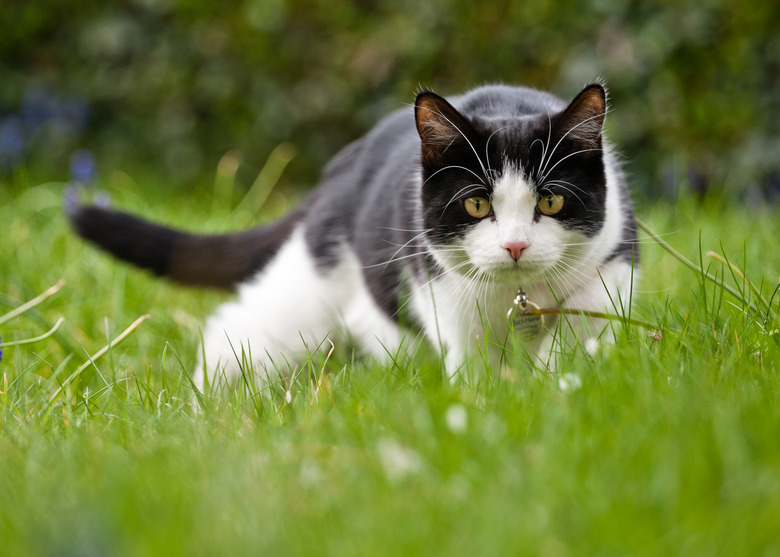Mating Habits Of Cats
Cats have some pretty peculiar habits when it comes to mating. While a tomcat struts his stuff, acting like he's in charge, it's really the queen who calls the shots. If you have intact felines at home, it's wise to be familiar with cats' mating behavior. Otherwise you could wind up with a litter of kittens soon.
The mating behavior of cats
The mating behavior of cats
Tomcats, non-neutered males, are always on the prowl and ready to breed. Intact female felines, which are called queens, have to be in season. According to PetPlace, under natural conditions, most female cats cycle between January and March and between May and June each year. This is the time of year when she's exposed to long daylight hours, which activate her sexual hormones.
Queens usually go in and out of heat cycles, although signs aren't always obvious even if she is ovulating. Initial heat cycles start as young as 4 months of age, according to Merck Manual. In early spring, your queen's cycles begin and last 14 to 21 days.
Tomcats in rut
Tomcats in rut
Often, intact male cats are sexually mature as early as 7 months of age. While tomcats can be ready to breed in the blink of an eye at any point in time, usually they're most sexually excited during the spring — the same time that queens conveniently get ready for breeding. This peak of sexual awareness is called the "rut."
Your tomcat may parade around the house like he owns the place, twitching the tip of his tail, treading with his back legs, and picking fights with all the other animals in the house. This is the time period when he's also most likely to spray to mark his turf. His mating behavior should settle down during off-peak breeding fall and winter months.
Calls of the queen
Calls of the queen
When your queen is in heat, she'll make it known to all the tomcats in the neighborhood. The female mating cycle has three stages. In the first stage, called proestrus, your female cat will likely have a ravenous appetite. She'll also probably make low-sounding short mews and seem restless. This stage only lasts for a couple days.
The second stage of the mating cycle is called estrus, often referred to as "heat." For four to 10 days, your cat will display mating behavior. When you're around, she'll likely cling to you, weave around your legs and be affectionate. She'll be overly loud and talkative, making sharp sounds like she's in pain. This is her mating call, a sound used to attract a tomcat.
Feline courtship rituals
Feline courtship rituals
As soon as a tomcat hears the call, he'll prance on over and court the queen. They'll sniff each other and seem to play a game of hard to get. This can last for as long as several hours. Once your queen decides that this is an acceptable suitor, she'll assume the position and let him mount her.
Because intercourse can be painful, the queen might let out a loud cry or hiss. She may even turn around and swat at her partner. Afterward, she'll roll around on her back and have a bath while the tomcat will most likely wander off to groom himself.
The end of the season
The end of the season
Finally, the interestrus stage, or third stage of the queen's cycle, begins. Even if a tomcat comes around during this time frame, she won't want anything to do with him. She might be a little aggressive and try to fight if he attempts to mount her. She'll stay in this stage for seven to 14 days. If conception successfully occurred while she was in heat, you can expect kittens in approximately 63 days.


